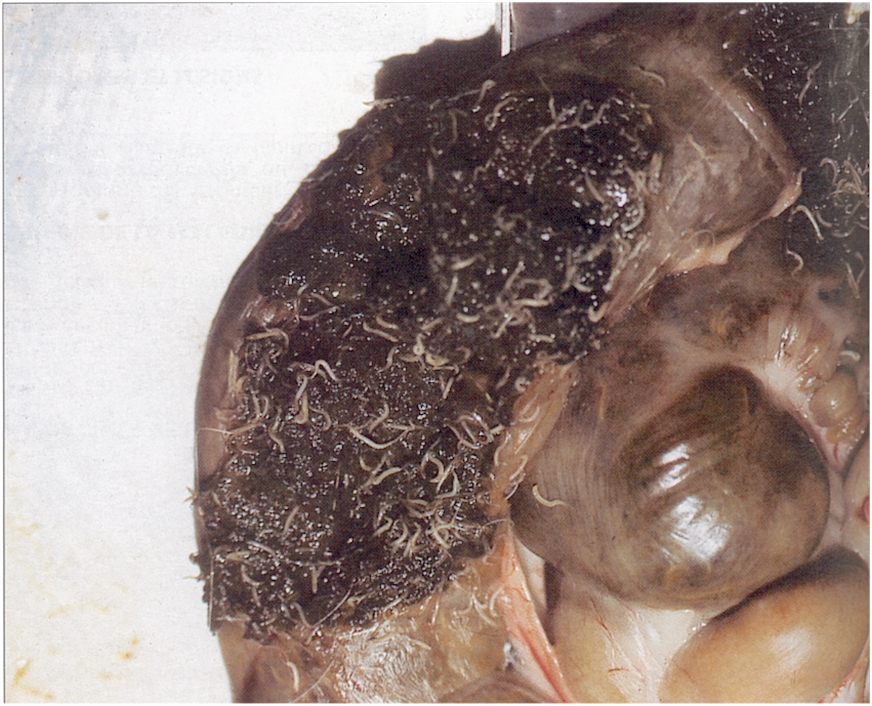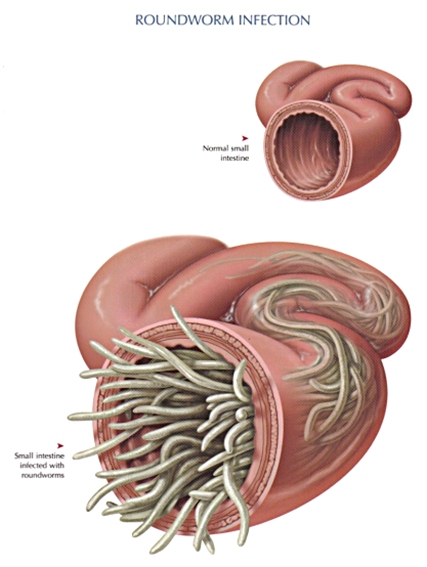Parasitic worms of the digestive
tract
Generalities
Esther van Praag,
Ph.D.
|
MediRabbit.com is funded solely by the generosity of
donors. Every donation, no matter what the
size, is appreciated and will aid in the continuing research of medical care
and health of rabbits.
Thank
you |
Warning: this file contains pictures that may be
distressing for some persons.
|
The digestive tracts of rabbits,
hares, and cottontails can be home to dozens of different parasites. Some are
very rare, some are pathogenic only under exceptional circumstances, and
others have barely been studied. In this article, we will be discussing the
most commonly found parasitic worms of house rabbits.
Wild rabbits, as well as healthy
house and pet rabbits living in clean conditions, can be infested by
gastrointestinal parasites. In the case of pet rabbits, the life cycle of the
parasites is often disrupted when the appropriate conditions for the development
of the larval stages (L1, L2, and sometimes L3) are not met indoors. Many parasites are heteroxenous (multihost), meaning they must complete intermediary
stages in several hosts before reaching the final host for reproduction. For
instance, the different juvenile forms of the liver fluke (Fasciola
hepatica) are found in certain snails in the grass of marshy areas before
entering the rabbit digestive tract. The little fluke larvae (Dicrocoelium lanceolatum)
must live in snails and ants before becoming infective in rabbits. Such
parasites are rarely found in indoor-dwelling rabbits due to the disruption
of their life cycle caused by the absence of intermediate hosts in the home
environment. Other parasites are monoxenous, meaning they live and reproduce
on a single host. Their larval stages are typically found in wet grassland,
stagnant water, or hay before being ingested by the unique and final host,
the rabbit. Such worms are more frequently observed in domestic rabbits. In order to prevent worm invasion
in a house rabbit, it is essential that: ·
Forage should not be gathered in
areas where there are numerous dogs, cats, or rodents; ·
Fresh greens and vegetables be
washed carefully with running water; ·
Hay and straw used as litter be
changed regularly (this avoids attracting flies too); ·
Hay that cannot be changed daily should
be provided in feed rack, where it cannot be soiled with feces or urine; ·
Litter boxes be cleaned daily,
using hot running water, vinegar, or chlorine; Nematode parasitic worms
Nematode parasitic worms of the domestic rabbit
Clinical features and diagnosis
Treatment
Acknowledgement
Thanks are
due to thank Simone van der Meij, and her rabbit Jasper, for the pictures or worm-infested
droppings, and to Arie van Praag, for the picture of Flora. Further
information
3.
S. Boucher, L. Nouaille (2002)
Maladies des Lapins. Editions France Agricole, p. 122-135 |
|||||||||||||||||||||||||||||||||||||
e-mail: info@medirabbit.com









